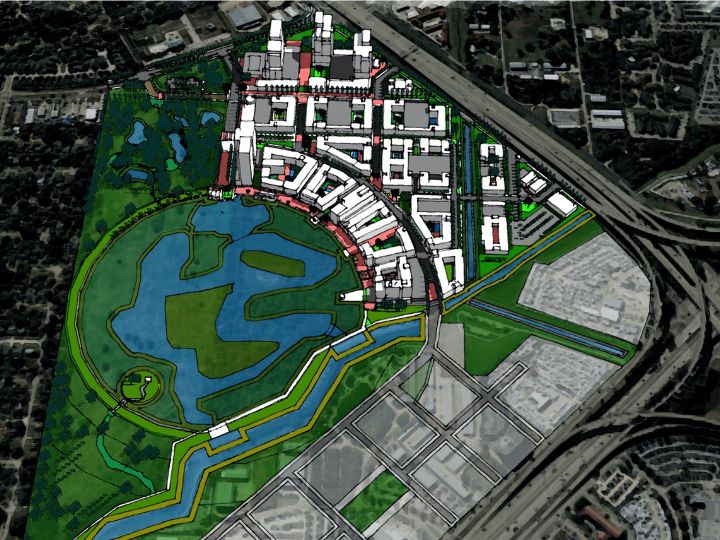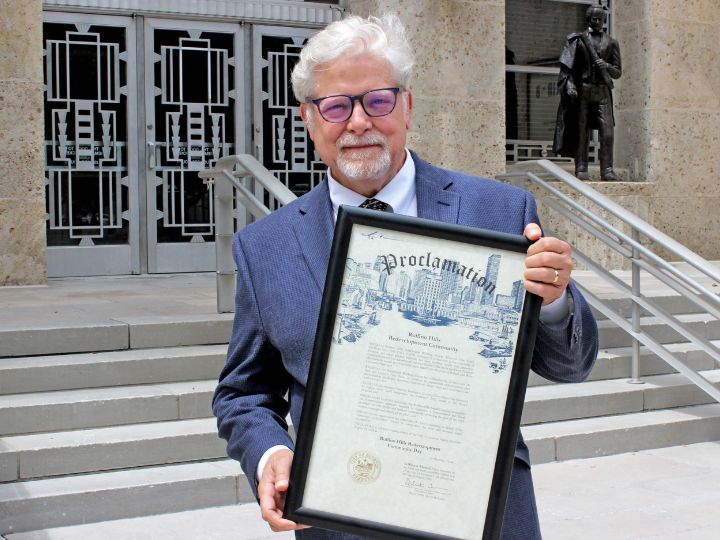

A master plan developed at the University of Houston to transform a former landfill in southwest Harris County into a town center, park and flood control facility has been recognized by industry peers and local government.
The city of Houston proclaimed August 23, 2022, as Ruffino Hills Redevelopment Community Day, acknowledging efforts by Gerald D. Hines College of Architecture and Design Professor Bruce Race, his students and the community to redevelop former household waste landfill Ruffino Hills at the intersection of I-69 and the Sam Houston Tollway.
The “Ruffino Hills Landfill: Resilient Redevelopment and Detention Strategy” is an integrated economic and environmental resilience project that demonstrates how to meet the demanding targets in the city of Houston’s climate action and resilience plans. The concept for The Town Center at Five Ponds fulfills the community’s desire for a development that could be a catalyst for new investment, according to Race, who leads the project along with non-profit organization Houston One Voice and the Southwest Houston Redevelopment Authority.
Race calls it a “generational opportunity” to transform a former landfill site while balancing the community need for stormwater detention, economic development and recreation. The proposal projects to create 1,800 jobs and provide housing for 6,700 residents at the site.
"The community wanted something that would improve their economy, as well as recreational parks and educational components," said Race. “But this isn’t just an urban planning assignment, it’s a research project that can improve the quality of life for people in the area. My students and I showed how to make this an energy positive project that meets the city’s climate action plan targets.”
The project also received the American Planning Association Houston Section’s Gold Resilience Award, which honors outstanding contributions to planning in the region. The award for resilience recognizes projects that improve a community’s ability to bounce back from natural disasters, climate change and human-made disasters.
A key motivation for working with the community was to plan a project that overcame the costs of converting the landfill into a flood control facility, said Race. The master plan aims to meet flood control detention goals through a public-private approach of blending development income with detention funding as a pathway to a more feasible project. The project covers almost half of the needed detention for Keegans Bayou, which runs next to the site and feeds into Brays Bayou.
“These are research projects with impact,” said Race. “We are demonstrating how innovative planning and implementation can make Houston more resilient and prosperous.”
- Story by Rebeca Hawley, senior media relations specialist